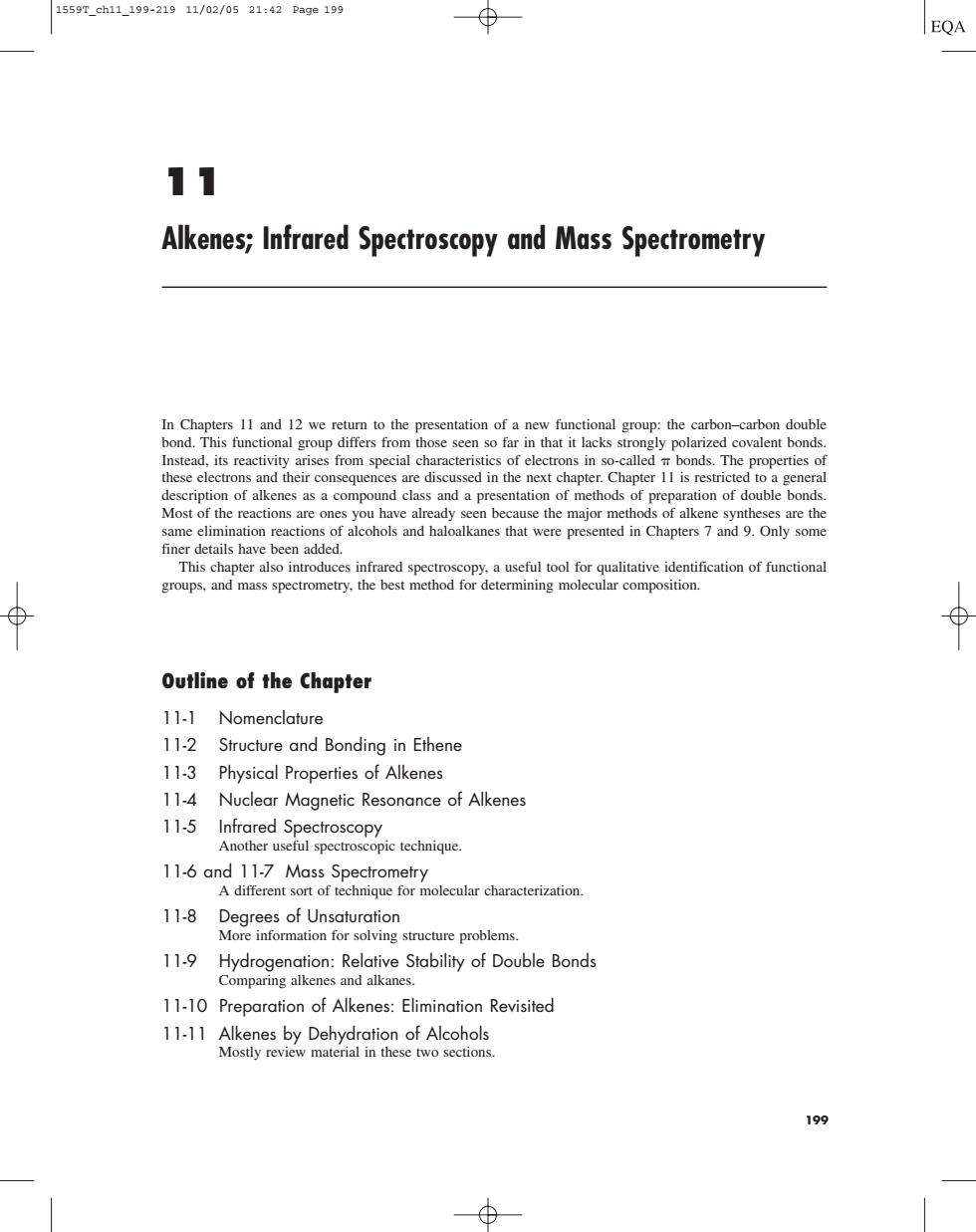正在加载图片...

1559ch11199-21911/02/0521:42Page199 EQA 11 Alkenes;Infrared Spectroscopy and Mass Spectrometry Instead.its from special characteristics of electrons in so-caledbonds.The properties of a gencra Most of the reactions ar ones you have aready s because the maior methods of alkene synthescs are the am limnion actions of alcohols and haloalkanes that were presented in Chapersand Only some seful tool for ualitative identification of functional Outline of the Chapter 11-1 Nomenclature 11-2 Structure and Bonding in Ethene 11-3 Physical Properties of Alkenes 11-4 Nuclear Magnetic Resonance of Alkenes molecular characterization. 11-8 Degrees of Unsaturation tion for solving structure problems 11-9 Hydrogenation:Relative Stability of Double Bonds Comparing alkenes and alkanes. 11-10 Preparation of Alkenes:Elimination Revisited 11-11 Alkenes by Dehydration of Alcohols Mostly review material in these two sections11 Alkenes; Infrared Spectroscopy and Mass Spectrometry In Chapters 11 and 12 we return to the presentation of a new functional group: the carbon–carbon double bond. This functional group differs from those seen so far in that it lacks strongly polarized covalent bonds. Instead, its reactivity arises from special characteristics of electrons in so-called bonds. The properties of these electrons and their consequences are discussed in the next chapter. Chapter 11 is restricted to a general description of alkenes as a compound class and a presentation of methods of preparation of double bonds. Most of the reactions are ones you have already seen because the major methods of alkene syntheses are the same elimination reactions of alcohols and haloalkanes that were presented in Chapters 7 and 9. Only some finer details have been added. This chapter also introduces infrared spectroscopy, a useful tool for qualitative identification of functional groups, and mass spectrometry, the best method for determining molecular composition. Outline of the Chapter 11-1 Nomenclature 11-2 Structure and Bonding in Ethene 11-3 Physical Properties of Alkenes 11-4 Nuclear Magnetic Resonance of Alkenes 11-5 Infrared Spectroscopy Another useful spectroscopic technique. 11-6 and 11-7 Mass Spectrometry A different sort of technique for molecular characterization. 11-8 Degrees of Unsaturation More information for solving structure problems. 11-9 Hydrogenation: Relative Stability of Double Bonds Comparing alkenes and alkanes. 11-10 Preparation of Alkenes: Elimination Revisited 11-11 Alkenes by Dehydration of Alcohols Mostly review material in these two sections. 199 1559T_ch11_199-219 11/02/05 21:42 Page 199